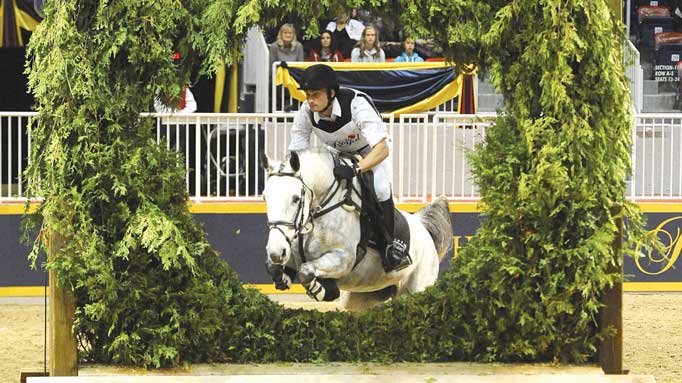Roberts talks about his secrets for success in this type of competition that is starting to crop up more often at venues such as the Pacific National Exhibition, as well as similar “express eventing” or “derby cross” classes.
It’s difficult to prepare for something like the Royal’s indoor eventing. You have to try to change your thought process and not think about eventing. It’s a fun class and you want to make sure the horse has a good time, too. It’s always a little bit seat-of-the-pants, to tell you the truth!
The week before the class, my preparation is pretty intensive. You want to make sure your horse has its lead changes and is reacting to every little cue. You are going to be going fast to some cross-country jumps and taking some pretty serious angles, which is different from an actual event where you’d normally take the time to set your horse up. Here, it’s “let see what happens when we go faster and take some risks.”
You can’t really prepare for the actual atmosphere. My dad [Ian Roberts] sets up a course of cross-country fences indoors at Dreamcrest [run by Ian and wife Kelly Plitz in Port Perry, ON], we crank the music loud and have people cheer and clap, but it’s not the same atmosphere. There’s not really a way to be fully prepared.
Before you get to the main ring, the horse might have an issue with the warm-up ring at the Royal, as the ceiling is only 12 feet high. You can get out to a practice session in the main ring really early in the morning, which typically has just a vertical and an oxer to jump over. Your horse doesn’t see the course until you are out there and it’s your turn to jump.
The great thing about it is that the competition is over two nights, so if you don’t do so well the first night, you have a chance to redeem yourself and make improvements here and there. If you are going too fast on the first night, the horse will know you are going to run them hard the second night and might not want to do it. If you take it too easy the first night, you won’t have a chance the second night.
Try to be consistent. On the first night, I try to aim to finish about fourth and that’s a nice position to be in without having given up all your tricks. Maybe I won’t do all the inside turns the first night.
The horse to win this has obviously got to be careful and pretty open to change. If you have a good galloping horse you can win it, but you might get beaten by a horse that can turn. You need to be able to gallop, turn, and be super-accurate. All those factors add up over the two nights.
They have different course designers and different tracks for this class and that keeps it interesting. It’s always a surprise.”

